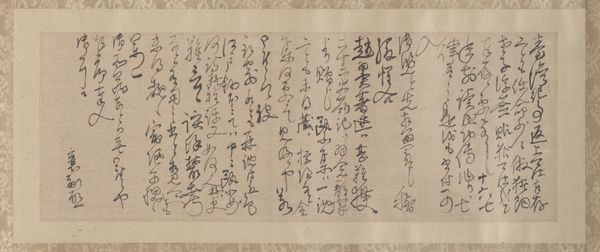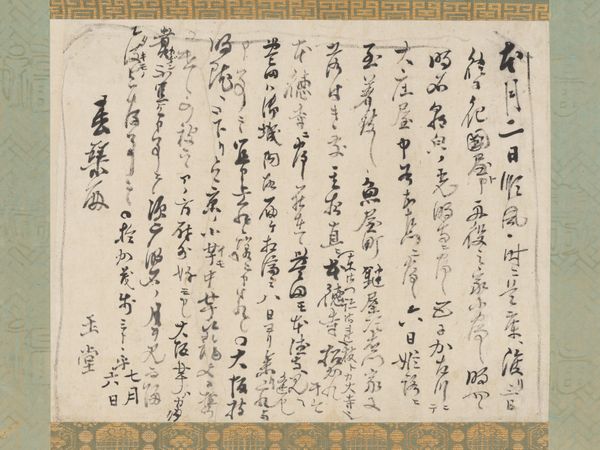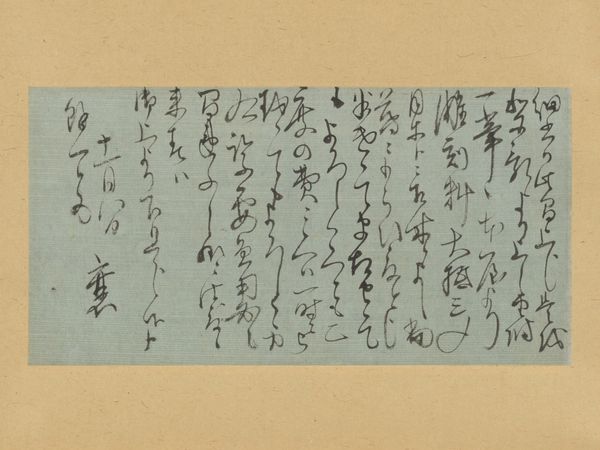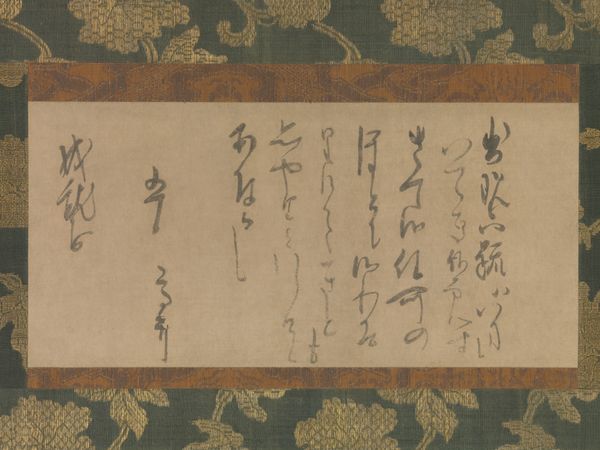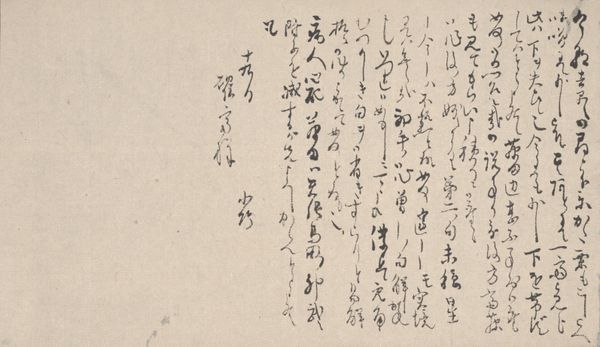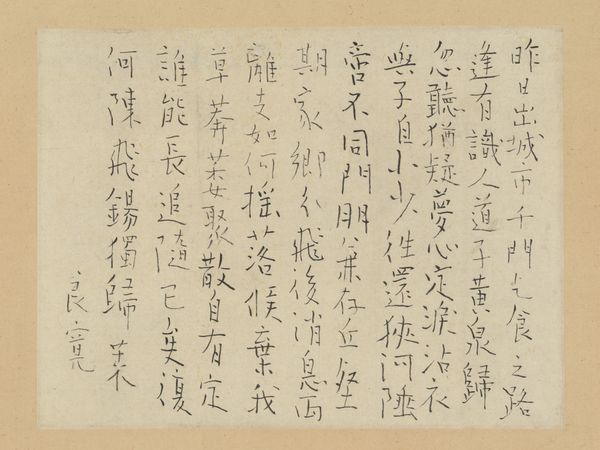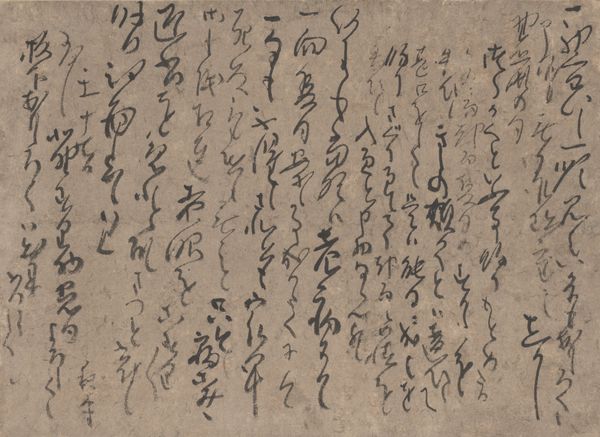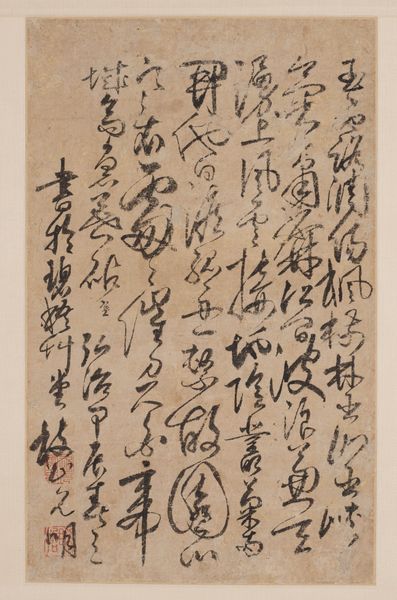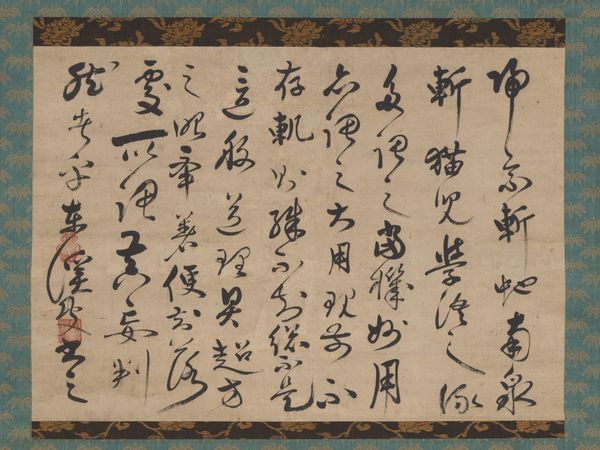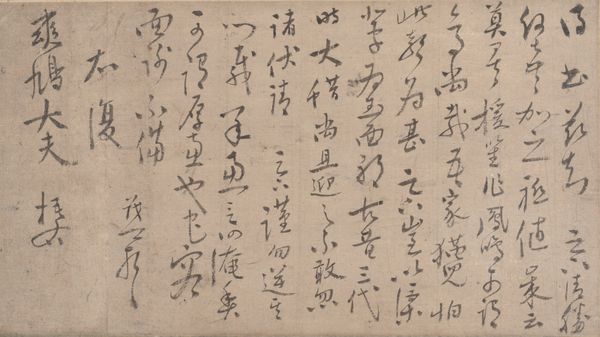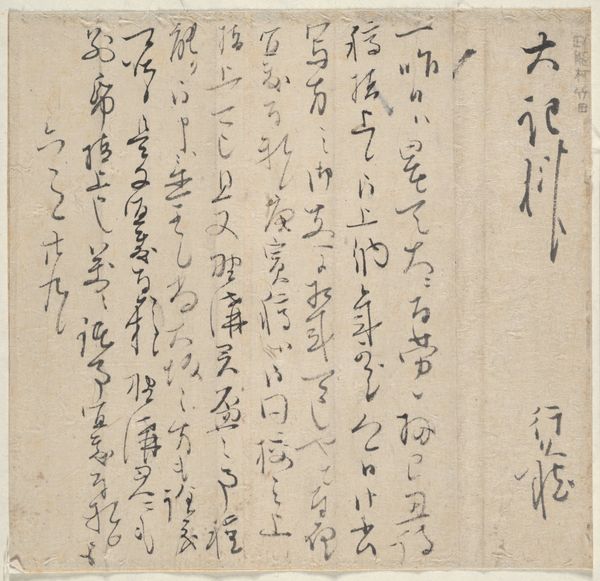
Section of the Dream Diary (Yume no ki) 1225
0:00
0:00
paper, ink
#
medieval
#
ink paper printed
#
asian-art
#
sketch book
#
japan
#
paper
#
personal sketchbook
#
ink
#
calligraphy
Dimensions: Image: 13 1/4 x 21 5/8 in. (33.7 x 54.9 cm) Overall with mounting: 48 x 27 in. (121.9 x 68.6 cm) Overall with knobs: 48 x 29 1/8 in. (121.9 x 74 cm)
Copyright: Public Domain
This is a section of a dream diary, made with ink on paper in Japan, sometime between 1173 and 1232, by the Buddhist monk Myōe Kōben. Myōe meticulously recorded his dreams, reflecting a growing interest in dreams as a source of spiritual insight and religious authority in the Kamakura period. Calligraphy was crucial. In Buddhist practice writing produces merit, and skilled calligraphy itself conveyed status. Myōe’s interpretive project can be situated among other efforts to revive Buddhism at a time of perceived moral decline. Religious institutions in Japan exerted immense social control, with Buddhist temples owning vast estates and influencing political affairs. Myōe's dream diary, though deeply personal, thus invites us to consider how individual spiritual experiences were shaped by, and could potentially challenge, established religious norms. To understand this work fully, we might consult not only art historical sources, but also religious texts, social histories of Kamakura Japan, and studies of dream interpretation across cultures. Through such interdisciplinary research, we can begin to appreciate the complex interplay between individual experience, artistic practice, and the broader social context.
Comments
No comments
Be the first to comment and join the conversation on the ultimate creative platform.
